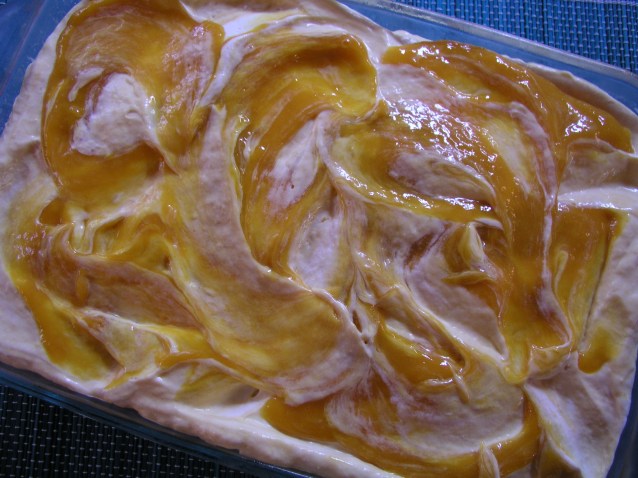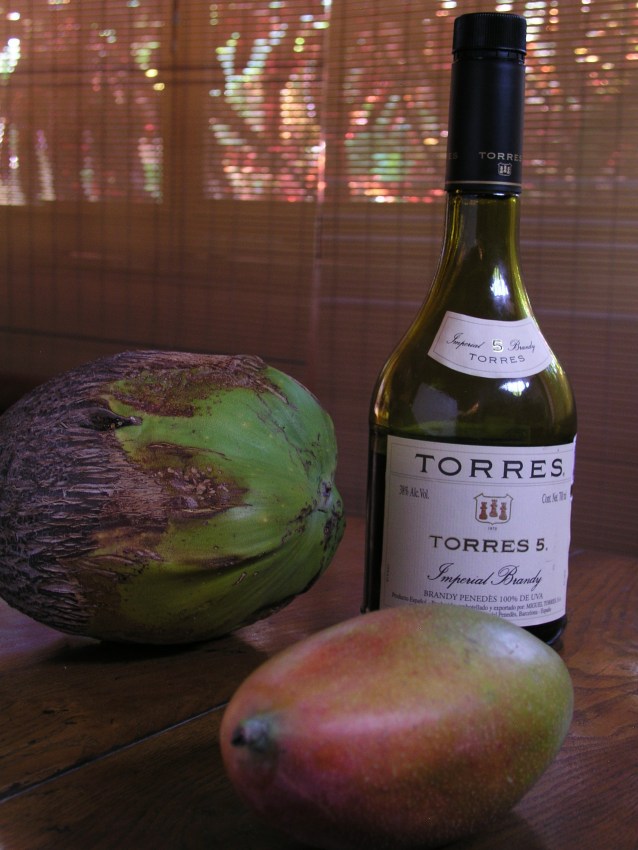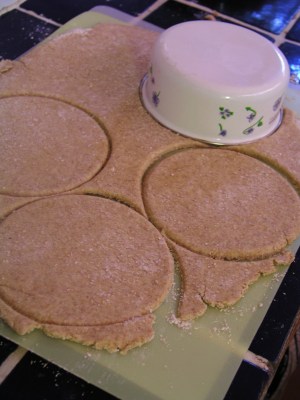Rancho El Limón, forty-five minutes out of Puerto Vallarta toward the Sierra Madre Mountains in the state of Jalisco, is a real, honest-to-goodness organic farm. Every Sunday, Alison brings the ranch’es bounty of cherry tomatoes, mixed salad greens, fennel, arugula, freshly laid eggs, and sometimes a giant Mexican squash or watermelon, to the market at the La Cruz Marina.
Since the Sunday Market began, Alison and her table of organic harvest are all we have known about Rancho El Limón, so Russ and I jumped at an opportunity to visit the ranch when we were invited to an open house. It was a chance for a number of us who participate in the market to tour the ranch, meet Alison’s partner, Manuel de Jesús, and learn about the other side of Rancho El Limón, the Pura Vida Spa.
The day was one of those bright, sunny Mexican days, when the sun seems too bright, the sky almost too brilliant. Alison and Manuel had a lunch ready for us under the cool shade of mango trees, featuring — what else — a huge salad of homegrown ingredients, with local fresh cheeses and corn tortillas. We would have expected nothing less. Even the salad dressing of pureed tomatoes came from the land.
Alison was formerly involved in a venture that sold chimeneas made to her specifications. This interesting stove, made of fired, glazed clay, comes with racks for cooking over the chimney, and that is exactly how the tortillas served with lunch were heated over a fire of mango wood. This type of stove, in one form or another, is found all over the world, and Mexico has a long tradition of relying on chimineas for heating and cooking. This one was a beauty in form and function.
A large, clay horno, or oven, was just outside the kitchen. It had recently been used to cook pizzas, but they were not on the menu today. Hornos, made of adobe clay, also have a long history in Mexico, and are seen in backyards throughout the countryside.
After lunch, we were taken on a tour of the house, with its spacious dining room, well-appointed guest rooms, and breezy walkways. Manuel has owned the ranch house and its thirty hectares of farm land for over twenty years. The house has a comfortable, welcoming feel, perfect for an afternoon with friends.
This was when we learned about the other business side to Rancho El Limón, known as Pura Vida Spa. Winter visitors and busy Puerto Vallartans can spend a few days enjoying the treatments for body and soul, with massage, steam baths, stretching exercise, and other activities that sooth and relax.
The highlight for me, beside the organic lunch, great ranch house, hospitable hosts, pleasant companions, and shady garden setting — in short, everything — was the tour of the greenhouse, the source of our weekly, organic salad fixings. Rancho El Limón produces its own compost and worm castings for pesticide- and chemical-free produce.
The afternoon ended with a walk to the calm Rio Ameca, a far cry from the raging river it can become during the summer rainy season. Sculpted ficus trees and wild flowers lined the walk. The dogs romped. A perfect afternoon.
Alison is at the Sunday Market at the La Cruz Marina, and can tell you more about Rancho El Limón, its organic produce and spa activities. As long as you are there, buy some salad greens and cherry tomatoes. Her tomatoes are as sweet as candy.
Alison is also at the Sayulita market every Friday from 10 am until 2 pm until May 13. She is organizing a summer market at the Bucerias Bilingual Community Center that will begin Saturday May 7, also 10 am until 2 pm. The BBCC is two blocks behind Carnes del Mundo on Calle 16 de Septiembre, #48.
Rancho El Limón has a web page with more information and photos. It is between Ixtapa and Las Palmas, but don’t try to find it by yourself — the maze of ranch roads are tricky to negotiate. Alison can provide detailed directions if you want to visit.
Rancho el Limón
Las Palmas, Jalisco
044 322 110 1689 English
044 322 174 8986 español
From within USA/Cananda 858 736 9004
email: info@rancholimon.com, rancholimon@gmail.com



























